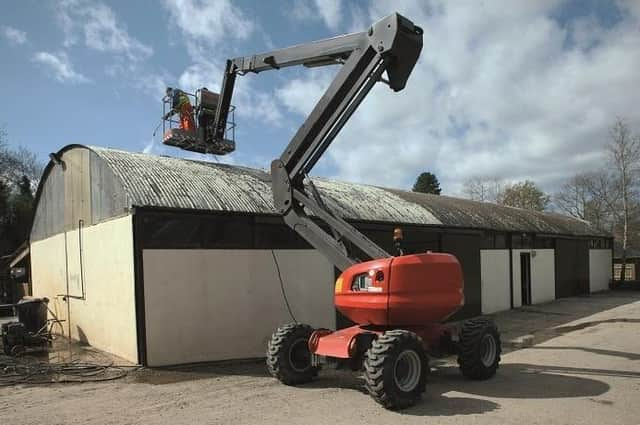Think before you work at height


Many falls happen while agricultural buildings or other farm structures are being built, demolished or maintained. These jobs typically involve working at height and require some form of temporary access, such as ladders, scaffolds, other working platforms or from unprotected edges of roofs or other structures.
Serious and fatal falls can occur during the repair of buildings damaged due to storms for example. Many agricultural buildings have fragile roofing materials that cannot support the weight of a person.
Advertisement
Advertisement
In many cases, simple straightforward physical protection measures can prevent falls occurring, but too often a lack of foresight and planning results in the necessary protection being neglected during this high-risk work.
In order to work safely at height the following principles should be followed:
- Only undertake roof work or work at height if competent to do so
- Before you start, plan and risk assess all work at height, paying particular attention to fragile roofing materials
- Take steps to avoid, prevent or reduce risks
Advertisement
Advertisement
- Before beginning work, ensure a safe system of work is employed and suitable equipment is available to do the job
Also, ensure all the work areas and access platforms are fitted with guard rails. If this is not possible, install safety nets or air bags underneath the roof or use a harness system.
Remember: Falls on farms often occur because no safety precautions are taken, or the equipment employed is defective, inappropriate, or used incorrectly. Often people about to do a job believe it will ‘only take a few minutes’. They take the risk in the hope that simply trying to be careful will be enough.
The Stop and Think Checklist
Always
- when using a ladder, make sure it is in good condition and long enough for the job
- watch out for overhead power lines
- ensure the ladder is tied or footed to prevent slipping
Advertisement
Advertisement
- keep three points of contact with the ladder and avoid stretching where your belt buckle goes outside the stiles of the ladder
- check the location of the roof-lights before crossing a roof – they are often hard to see once you are on the roof
- Use roof ladders or crawling boards to spread your weight when carrying out short term work on roofs.
- Plan a path to avoid roof-lights and remember, a roof-light won’t hold your weight as it may shatter and you will fall through the opening
Never
- set up a ladder on ground with cross or down slopes
Advertisement
Advertisement
- try to use a single plank to span the purlins or the joist – always use crawling boards or lightweight staging
Remember: For many tasks carried out at height, using a suitable, purpose-built work platform or mobile elevated work platform will provide greater protections against falls than using a ladder.
- Never use makeshift alternatives such grain buckets, potato boxes or pallets on a forklift truck or telescopic handler. Think about whether there are safer ways to carry out the work. For example, if a roof requires repair, can you avoid going onto it by carrying out the repair safely from below? Think first and it could save your life.
For more information about working at height please contact the HSENI helpline on 0800 0320 121 or visit:
www.hseni.gov.uk/falls
www.hseni.gov.uk/articles/falls-working-safely-height-farms
www.hseni.gov.uk/essentials